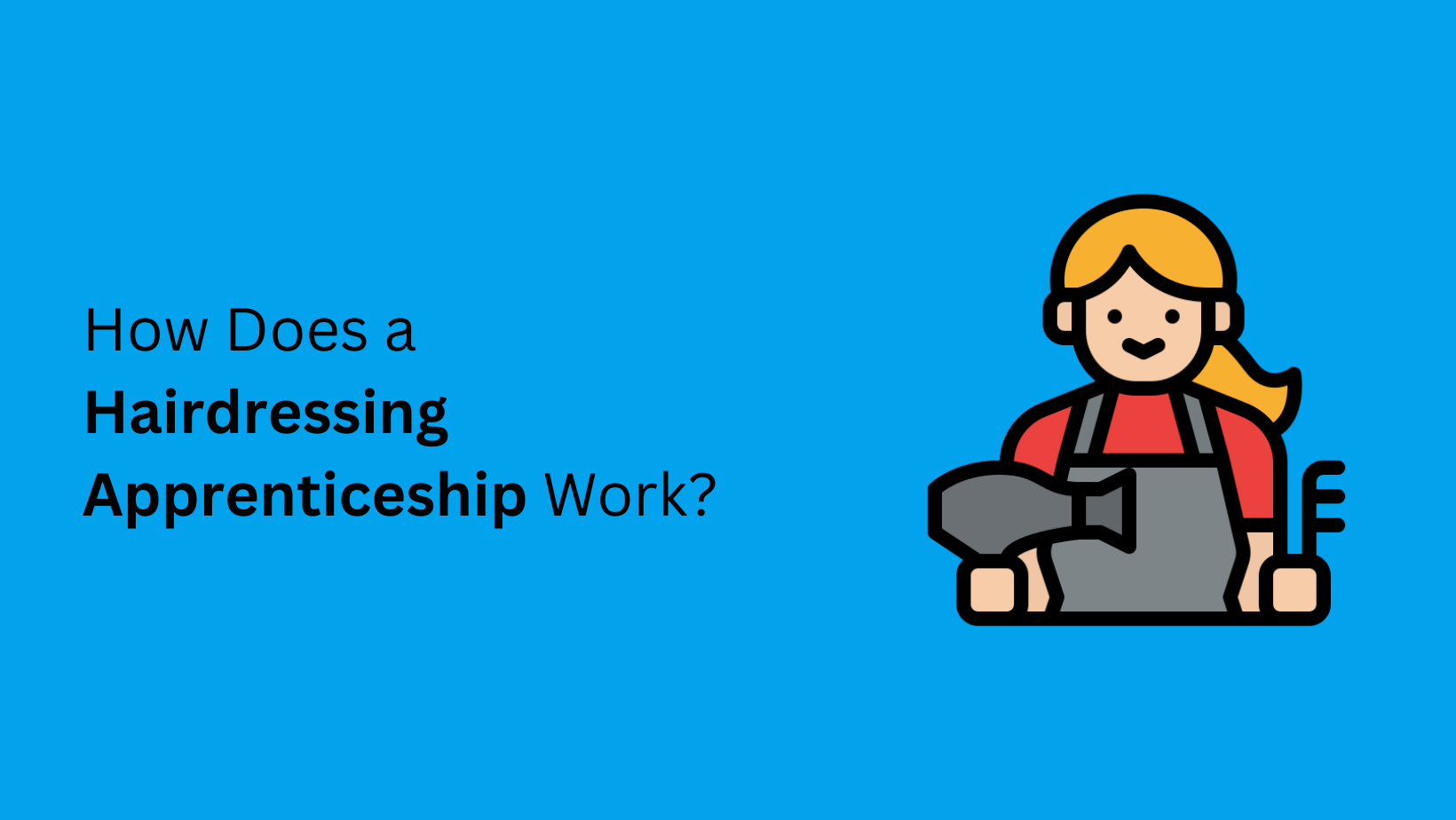Apprenticeships are an excellent way to gain practical skills and knowledge while earning a wage. However, you may wonder, “How does a hairdressing apprenticeship work?”
Are you passionate about styling hair and dream of becoming a professional hairdresser? One of the best ways to kickstart your career in the hairdressing industry is through an apprenticeship. Hairdressing apprenticeships offer a unique opportunity to gain practical skills and knowledge while working alongside experienced professionals.
This article will delve into how hairdressing apprenticeships work, providing you with all the necessary information to embark on this exciting journey.

What is a Hairdressing Apprenticeship?
A hairdressing apprenticeship combines on-the-job training and classroom-based learning, allowing aspiring hairdressers to gain hands-on experience while working towards a nationally recognised qualification. These apprenticeships are designed to provide individuals with the skills and knowledge required to excel in the hairdressing industry.
Who Can Apply?
Hairdressing apprenticeships are open to individuals aged 16 and over who are no longer in full-time education. No specific educational requirements make it accessible to a wide range of individuals with different academic backgrounds. However, having a genuine interest in hairdressing and a willingness to learn and develop new skills is essential.
Finding an Apprenticeship
To start your journey as a hairdressing apprentice, you need to find an employer willing to take you on and provide you with the necessary training. Several avenues can help you secure an apprenticeship position:
- Apprenticeship Vacancy Websites: Websites such as Complete Apprenticeship Guide, government portals, or industry-specific platforms list available apprenticeships across various sectors, including hairdressing. You can search for hairdressing apprenticeships in your local area and apply directly to the employers offering positions.
- Hairdressing Salons: Contacting local hairdressing salons directly and inquiring about any apprenticeship opportunities they may have is another way to find a position. Many salons actively participate in apprenticeship schemes and may welcome your interest.
Apprenticeship Structure
A hairdressing apprenticeship typically lasts between 12 and 24 months, depending on the level of qualification being pursued. The apprenticeship is divided into two components:
- On-the-Job Training: As an apprentice, you will work alongside experienced hairdressers in a salon environment. This hands-on training allows you to practice and develop your skills, learn different techniques, and gain practical experience in real-life scenarios. You will gradually take on more responsibilities as you progress.
- Classroom-Based Learning: Alongside your on-the-job training, you will attend a college or training provider for theoretical lessons and assessments. These classroom sessions cover essential topics such as health and safety, customer service, hair cutting and styling techniques, and product knowledge. The coursework complements your practical training, ensuring a well-rounded understanding of the hairdressing profession.
Qualifications
Hairdressing apprenticeships offer various levels of qualifications, including:
- Level 2 Apprenticeship: This apprenticeship provides a foundation in hairdressing, covering basic cutting, styling, and colouring techniques. Successful completion leads to a Level 2 Diploma in Hairdressing.
- Level 3 Apprenticeship: A Level 3 apprenticeship builds upon the knowledge gained in Level 2, focusing on advanced cutting, colouring, and styling techniques. Successful completion leads to a Level 3 Diploma in Hairdressing.
Assessment and Progression
Throughout your apprenticeship, you will be assessed in the workplace and classroom. Assessments may include practical tasks, written assignments, and examinations. Regular reviews and feedback from your employer and college tutors will help monitor your progress and identify areas for improvement.
Upon completing your apprenticeship, you will have the opportunity to progress in your career. Some apprentices may continue working at the same salon, while others may explore different hairdressing environments or even start their own businesses.
Summary
Hairdressing apprenticeships offer a fantastic opportunity to gain practical skills, knowledge, and a recognised qualification while working alongside experienced professionals. By combining on-the-job training with classroom-based learning, these apprenticeships provide a solid foundation for a successful career in the hairdressing industry. If you are passionate about hairdressing and want to learn and grow, consider embarking on an apprenticeship and watch your dreams take shape.
